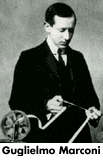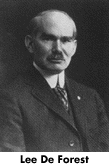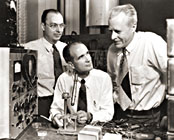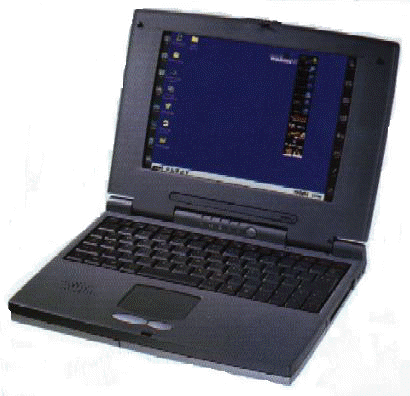
|
History of Transistor
After years of research and experimentation involving literally hundreds of scientist from around the world, the final breakthrough in the development of the transistor was left to three men. Dr Walter Brattain, Dr John Bardeen and Dr William Shockley all three scientists working at Bell laboratories, are the men credited with this significant achievement. In December 1947 they made the historic discovery of the transistor effect and in so doing developed the very first transistor device. In 1956 their achievement was acknowledged when they were awarded the Nobel Prize for physics.

What happened in:
1898
Thomson discovers the electron
What happened in:
1900
Max Planck describes quantum effect
What happened in:
1902
February 10 - Walter Brattain born
What happened in:
1905
Einstein described his special theory of relativity
What happened in:
1906
Lee De Forest invents radio amplifier
What happened in:
1908
May 23 - John Bardeen born
What happened in:
1910
February 13 - William Shockley born
What happened in:
1912
Lee De Forest invents telephone amplifier
What happened in:
1919
Proton discovered
What happened in:
1921
Albert Einstein wins Nobel prize
What happened in:
1930
Quantum Mechanics meets Semiconductors
What happened in:
1932
Quantum theory of solids developed
What happened in:
1939
Electron microscope invented
What happened in:
1940
Russell Ohl discovers P-N junction
What happened in:
1945
Shockley & Morgan assemble solid state research teams
What happened in:
1946
ENIAC, the pioneering electronic digital computer, uses 18,000 vacuum tubes
What happened in:
1947
December 16, invention of point-contact transistor
What happened in:
1948
January, Shockley invents junction transistor , The military is informed about transistors
What happened in:
1949
First Germanium transistors sold
What happened in:
1950
Transistors developed at Bell Labs
What happened in:
1951
Junction transistor developed, J Bardeen leaves Bell Labs
What happened in:
1952
Bell shares the technology
What happened in:
1953
First product to use transistor sold: hearing aids
What happened in:
1954
First transistor radio, First fully transistorized computer, Texas Instruments makes silicon transistor
What happened in:
1955
Albert Einstein passes away.
What happened in:
1956
Shockley leaves Bell Labs; Nobel Prize Awarded to Shockley, Brattain & Bardeen
What happened in:
1957
"Traitorous Eight" establish Fairchild Semiconductor Co., Superconductivity theory described by Bardeen et al
What happened in:
1958
J Kilby invents integrated circuit
What happened in:
1960
First "Mini" Computer
What happened in:
1961
Fairchild & Texas Instruments sell integrated circuits
What happened in:
1965
"Moore's Law" predicts the rate of growth of IC components
What happened in:
1967
First hand held calculators
What happened in:
1968
G Moore & R Noyce leave Fairchild to form Intel Corp
What happened in:
1971
T Hoff invents the microprocessor (with 2300 transistors)
What happened in:
1972
J Bardeen wins 2nd Nobel Prize for work in Superconductivity
What happened in:
1975
Bill Gates and Paul Allen start Microsoft Corp
What happened in:
1981
IBM PC First Space Shuttle launch
What happened in:
1989
World Wide Web begins
What happened in:
1997
Intel Pentium microprocessor produced with 7.5 million transistors
Events surrounding this year:
The Wireless era
The history of the transistor, arguably the greatest invention of all time, can be traced back two hundred years to the beginning of the 19th century. It was during this period that famous inventors such as Maxwell, Hertz, Faraday, and Edison began to experiment with electricity, coming up with ideas as to how electricity could be harnessed for human uses.
It was then that later inventors such as Braun, Marconi, Fleming, and De Forest developed upon the fundamentals established by the earlier generation of inventors to more practical and useful appliances such as the radio. This laid the foundation for groups of scientists working at Bell Laboratories, such as William Shockley, Walter Brattain, John Bardeen, and numerous others. This led to the advent of the Information Age...
In 1874, Ferdinand Braun made an important discovery to overcome one of the greatest problems in wireless communication. This was that though a wireless signal could be transmitted over great distances, the receivers at that time were unable to detect these wireless signals. Braun's discovery showed that crystals could conduct current in one direction under specific conditions. This phenomenon was known as rectification.

It was the Italian electrical engineer, Guglielmo Marconi, one of the early pioneers and inventors of the radio who, using a new technology invented by Nikola Tesla, sent a radio signal farther than one mile for the first time in 1895. In 1901, he transmitted the first transatlantic wireless communication. This achievement heralded the birth of wireless communication. In spite of this, there were still countless technological barriers to overcome in the quest to perfect wireless communication and make the technology practical.
Events surrounding this year:
Need for Amplification
One of the greatest obstacles standing in the path of wireless communication was the fact that physical barriers and long distances weakened the radio signal as it traveled through the air. What the crystal sets needed was a radio signal strong enough to be detected. Yet, on the rare occasion that a signal was detected, it was so weak, the operators could hardly hear it.
English physicist, John Fleming, was instrumental in solving this problem. He fitted two electrodes to a lightbulb and attached it to a radio receiving system, so building his vacuum tube diode (1904). In this device, electrons flowed from the negatively charged cathode to the positively charged anode. The current flowing from negative to positive changes the oscillations of the incoming signal into detectable direct current.

Fleming's vacuum tube diode was later to be improved by Lee de Forest, an American who modified his tube, and invented the amplifying vacuum tube. He added a third electrode, or grid, a network of small wires around the cathode. Its purpose was to control the flow of electrons from the cathode to the anode. The lower the negative potential of the grid, the more electrons it allowed to flow through the tube, so producing an amplified current. De Forest patented this triode or audion in 1907.
The vacuum tube was also instrumental in the development of many other modern devices, including the television, computers and early telephones. Unfortunately, as these devices were improved, they began to require something far more compact and reliable than the vacuum tube which was no longer practical. The ENIAC computer, built later at the University of Pennsylvania is a perfect illustration of this. Because it used so many vacuum tubes, it filled several rooms, and consumed enough power to keep ten homes going. The vacuum tubes also had other practical problems. It was fragile and bulky, required a lot of heat to burn out electrons and often burnt out.
The man who actually coined the term 'transistor' was J.R. Pierce, a Bell Labs engineer.
Events surrounding this year:
Bell Laboratories and the Transistor
Bell Laboratories was founded in 1925, bringing together worldclass scientists researching electronics, chemistry, physics, communications technology and various other disciplines. They continued where Braun and others had left off, researching the unusual properties of crystals. Because of the fact that these materials had properties somewhere between those of conductors and insulators, they became known as semiconductors.
During the 1930's Bell Labs scientists were working on using ultra-high frequency waves for telephone communication when the problem of detecting these signals arose, as the conventional electron tube detectors were incapable of detecting these waves. The solution to this problem was to be found in an unlikely source, using the redundant "cat's whiskers" detector which was based on a crystal. This discovery led them to looking more closely at silicon, the most reliable semiconductor type.
They found that silicon consisted of two regions, a part that favoured positive current flow, called p, and a part that favoured negative current flow, called n. They further discovered the impurities that caused these tendencies and were able to reproduce them. This discovery of the P-N junction, laid the foundation for the development of not only the transistor, but all semiconductor devices of the future.
In 1945, Bell Labs intensified its semiconductor research when executive director, Mervin Kelly assembled a team of highly skilled solid state physicists. Realising that the vacuum tube had surpassed its potential as an amplification device, they began working on a replacement. Just as De Forest had developed Fleming's vacuum tube by adding a third electrode, the Bell Labs scientists decided to see if doing the same to the semiconductor detector would enable them to control the amount of current flowing through the silicon. This, they hoped, would provide a device that amplified just as the vacuum tube did, but without the massive amount of power and space needed by the vacuum tube.

Three of the physicists working on the project were John Bardeen and Walter Brattain, who were working on the properties of semiconductors and William Shockley, who was working on solid state physics. Together they began working with another type of semiconductor: germanium. Finally, during one experiment, Brattain noticed that a germanium crystal set in contact with two wires two-thousandths of an inch apart was amplifying. The many years of research had finally paid off. They had invented the first semiconductor device that could do the work of a vacuum tube: the transistor.
Events surrounding this year:
The impact of the transistors
One of the first commercial applications of the transistor was a more efficient telephone exchange, early in the 1950's. Other early applications included rural telephone carrier amplifiers and headset amplifiers, as well as the transistorised hearing aid. In 1954, IBM made the first computer devoid of vacuum tubes. It contained 2000 transistors.
The transistor radio came out in 1954, and was an instant hit, so much so, that it became the fastest selling reatil object of all time. The term 'transistorized' actually became a selling point. By the late 1950's the transistor was vital in electronic telephone switching systems, but also a key component of other important products and services, such as portable radios, computers, and radar. In the early 1950's, a few years after the transistor was invented, it captured the world's imagination. Here was an amazing new invention that affected the lives of ordinary people

Over the years, as semiconductor technology improved, the transistor steadily became faster, cheaper and more reliable. The invention of the integrated circuit in 1959 was a giant leap forward for the transistor. It allowed a large numbers of transistors and other electronic components as well as the wiring to be compacted together on a silicon wafer. Where as early transistors had cost between $5 and $45 to make the millions of transistors compacted onto today's microchips are for all intents and purposes free. This massive innovation spurred the evolution of the Information Age. Today's modern microprocessors consist of millions of transistors, with popular PC chips having as many as 3.5 million transistors.
|

